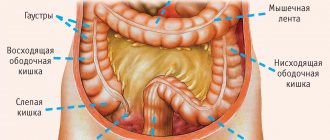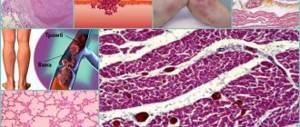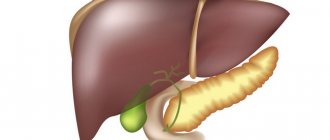What is malaria (general information)
Malaria (swamp fever) is a mosquito-borne blood disease that can be life-threatening if left untreated. Malaria is caused by infection with a parasite called Plasmodium. The parasite is transmitted by the bite of a female Anopheles mosquito (malarial mosquito). Plasmodium has more than 100 species, of which five are the most common and are responsible for causing malaria in humans.
Once in the human body, the parasite matures and multiplies in the liver. It then destroys red blood cells (erythrocytes). Malaria is not transmitted from one person to another. However, malaria can be transmitted from mother to newborn, and in this case it is called congenital malaria.
There is no vaccine for the disease. Malaria can be easily cured, but treatment is easier and more effective if the disease is diagnosed early. Malaria is common in subtropical and tropical regions because the parasite that causes it is more concentrated in these regions.
The symptoms of malaria are similar to those of the flu. Malaria can be of two types: uncomplicated and severe. Uncomplicated malaria occurs when it is diagnosed before the first symptoms appear, and in severe cases, damage to vital organs of the body can occur.
In a mild situation, symptoms appear within six to ten hours each day, and may vary when attacked by different parasites. Often, symptoms can be misinterpreted as being similar to cold and flu symptoms, thus delaying diagnosis.
Malaria can be easily detected through a blood test and treated with medications. But if you do not pay attention to the disease and do not treat it, it can lead to life-threatening complications, including death.
Characteristics of the disease
Malaria is a transmissible, infectious disease of origin that is transmitted by the bite of a mosquito of the genus Anopheles.
Accompanied by attacks of chills and an increase in the size of the liver, spleen, fever and the development of anemia. In practice, there are 3 ways of transmitting malaria:
- Transmission is the direct bite of a parasitic malaria mosquito. This is what is called the most common route of infection.
- Parenteral - in this case, the infection enters the patient’s body through medical devices that have not been properly processed.
- The transplacental route of infection is from mother to child.
Causes and spread of malaria
When a female Anopheles mosquito infected with the Plasmodium parasite bites a person, it causes disease. There are more than 100 species of Plasmodium bacteria, but only five of them can infect humans. They are found mainly in tropical and subtropical regions. The severity of swamp fever varies among all five types of Plasmodium.
The five types of Plasmodium that can infect humans are Plasmodium vivax , Plasmodium ovale , Plasmodium malariae , Plasmodium falciparum and Plasmodium knowlesi. Plasmodium falciparum is mainly found in Africa and is the most dangerous. Malaria caused by this type of bacteria can even cause death. Plasmodium vivax is also very dangerous because the parasite can remain in the liver for up to three years and lead to relapses of the disease.
No person can transmit malaria to another in their daily life, except for an infected mother who can pass it on to her newborn. In this case, it is called congenital malaria.
If an uninfected mosquito bites an infected person, it will also become infected and pass this infection on to all other people it bites. This is how the infection spreads.
The causative agent of malaria, the development of the disease
The causative agent of malaria, routes of transmission to humans
Malaria is caused by 4 types of microorganisms from the “kingdom Protista” - plasmodium. It is these four varieties that determine the form of malaria. The type “falciparuma” is manifested by a tropical form of infection, “vivaxa” – 3-day malaria, “ovale” – ovalemalaria, 4-day malaria, a consequence of the causative agent Plasmodium “malariae”.
Along with this, infection is possible through a transplacental method (during pregnancy), or through perenteral infection during blood transfusion from a carrier donor. In areas of epidemic foci of malaria, greater susceptibility to infection is observed among children and visiting tourists. The peak of infection coincides with the seasonal activity of insects - in the summer-autumn period.
Only one insect bite, in which it secretes parasitic sporozoites (plasmodia) with saliva, can cause human invasion.
Having traveled a certain path in search of a fertile environment for reproduction, sporozoites choose the liver and invade its cellular structure - hepatocyte cells. Here the transformation of sporozoites into schizons occurs, turning into large spherical cells.
The method of reproduction of schizon is unique, due to the special multicellular property of division. This rare feature of agamogenesis (asexual reproduction) of parasites is called shezogony. Multiple cells formed by such division are called merozoites.
- In the trophic form of malaria, such cells are capable of further reproduction, occupying and infiltrating back into the liver hepatocytes.
The duration of each breeding cycle takes from one to one and a half weeks. The hepatocyte cells themselves, which “sheltered” the parasite, die. The process of cellular parasitic reproduction proceeds extremely rapidly. Having destroyed the hepatocytes and emerging from them, they attack the erythrocytes, provoking attacks of malarial fever.
It manifests itself in response to the reaction of the hypothalamus (the thermoregulatory center of the body) to protein changes in erythrocyte cells and metabolic waste of the pathogen. In addition to the occurrence of attacks, there is an allergic reaction of the body to repeated processes of antigenic irritation.
Malarial attacks are accompanied by extensive vascular constriction of the peripheral branches during chills and processes of sharp vasodilation during fever.
"malarial mosquito"
Such changes increase the secretion of substances that increase the permeability of vascular walls. The possibility of proteins and plasma leaking into the extravascular space causes blood to thicken and slow blood flow. And high thromboplastic activity caused by the destructive process (hemolysis) of red blood cells increases blood clotting (hypercoagulation).
- With pronounced disturbances in microcirculation, processes of disseminated (widespread) intravascular hypercoagulation develop.
This leads to acute disturbances in the circulatory system and nutrition of brain structures. Invasion caused by Plasmodium falciparum (tropical form) is manifested by changes in the central nervous system. It can occur in a malignant form. Its genesis is due to:
- changes in the rheological properties of blood;
- adhesion (aggregation) of damaged erythrocyte cells;
- sticking of affected cells to the walls of microvessels;
- a high level of parasitic accumulation in organs and capillary vessels, causing thrombus formation and hemorrhagic processes.
The impact of parasitic toxins on the body is manifested by a pyrogenic (febrile) reaction, cellular proliferation in the reticuloendothelial and lymphoid elements in the tissue structure of various organs (in particular the liver and spleen), causing their enlargement. Due to the death of red blood cells, the processes of hemolytic anemia develop. Often, with the progression of tropical malaria, complications can manifest as coma, algid or hemoglobinuric fever, which leads to the patient's mortality.
Symptoms of malaria
Symptoms of malaria may appear 7 to 18 days after a mosquito bite . The duration of symptoms depends on the type of Plasmodium parasite that infects the person. In the case of Plasmodium vivax infection, symptoms may take longer to appear. However, you may be shocked to learn that in rare cases, it can take up to a year for the first signs of malaria to appear.
With some types of infection, fever occurs in a 24 to 48 hour . When it occurs, a person develops a fever, followed by chills, sweating, and fatigue. These symptoms and signs may last up to 6 hours.
The initial symptoms of malaria are similar to the flu, so the disease is often confused with the flu. Some initial signs:
- heat;
- chills;
- headache;
- vomit;
- sweating
The most severe type of malaria, caused by Plasmodium falciparum, can lead to life-threatening conditions such as organ failure (such as liver failure ).
Severe malaria may present with the following symptoms:
- chills and fever;
- disturbance of consciousness;
- breathing problems;
- abnormal bleeding;
- jaundice and signs of dysfunction of vital organs (liver, kidney failure, etc.);
- multiple seizures;
- abdominal pain;
- diarrhea;
- muscle pain;
- coma;
- stool with blood clots.
In areas where malaria is common, such as Africa, people identify symptoms and treat themselves without consulting a professional. However, this is not a good practice to follow. People who live in these areas also become partially immune to the disease after being exposed to it throughout their lives.
In what cases and which doctor should I contact?
Regarding the question of which doctor to contact when the first signs of fever in malaria appear - most often patients are seen by an infectious disease specialist and a cardiologist, hematologist and neurologist, nephrologist.
When should you urgently consult a doctor? When body temperature can rise sharply to 41-41.5 degrees and after a few hours drop to 35 degrees. Such temperature changes provoke disruption of blood flow and destruction of red blood cells, the development of hypotension and bradycardia. Subsequent vascular spasm can provoke blockage and an increase in blood viscosity, causing ischemia of tissues and internal organs.
How malaria infection occurs, watch this video:
Treatment of malaria
Treatment for malaria is aimed at eliminating (removing/excluding) the Plasmodium parasite from the patient's bloodstream. Treatment is carried out using a combination therapy method based on artemisinin . For regions where the parasite is resistant to treatment with artemisinin-combination drugs, this method is combined with the use of some other effective drugs.
Once the diagnosis is confirmed, treatment with an antimalarial drug should be started immediately. Antimalarial drugs that fight parasites in the blood include chloroquine, sulfadoxine-pyrimethamine (Fansidar), mefloquine (Lariam), atovaquone-proguanil (Malaron), quinine, and doxycycline.
Another drug, primaquine, is active against parasitic forms of the liver and prevents relapses. However, primaquine should not be taken by pregnant women or people with G6PD (glucose-6-phosphate dehydrogenase) deficiency.
Patients with severe P. falciparum malaria or who are unable to take oral medications should be treated by continuous intravenous infusion. There are several antimalarial drugs that can be administered this way.
Determining how to treat a patient with malaria depends on the type of parasite infecting, the area where the infection occurred, the patient's clinical status, and whether the patient is pregnant, has a drug allergy, or is taking other medications.
Important! India does not yet have an approved malaria vaccine that is commercially available. There are many studies, tests and global trials of malaria vaccines currently underway. Currently, more than 20 vaccines are in advanced preclinical development. One of them (Mosquirix® or RTS,S/AS01 (RTS,S)) was approved by the European Medicines Agency (EMA) in July 2015.
Also, in November 2020, WHO announced the deployment of pilot projects for the use of the RTS,S vaccine in selected areas in 3 sub-Saharan African countries: Ghana, Kenya and Malawi. Funding for the initial phase of the program has now been mobilized, with vaccinations planned to begin in 2020. These pilot projects could pave the way for wider use of the vaccine if its safety and effectiveness are found to be acceptable.
Clinic
Malaria has an acute onset and is manifested by fever, chills, malaise, weakness and headache. The body temperature rises suddenly, the patient is shaking. Later, dyspeptic and pain syndromes are added, which are manifested by pain in muscles and joints, nausea, vomiting, diarrhea, hepatosplenomegaly, and convulsions.
Types of malaria
Three-day malaria is characterized by paroxysmal course. The attack lasts 10-12 hours and is conventionally divided into 3 stages: chills, fever and apyrexia.
manifestations of malariaIn the first stage, the patient shudders, his skin turns pale, his limbs become cold and blue, and acrocyanosis develops. The pulse becomes rapid, breathing becomes shallow. The chill stage lasts 2 hours, during which the body temperature gradually rises and eventually reaches 40-41 degrees.
- The second stage lasts from 5-8 hours to a day. At this time, the health of patients worsens: the face becomes red, the sclera is injected, the mucous membranes are dry, the tongue is coated. Tachycardia, hypotension, shortness of breath, agitation, vomiting develop, and diarrhea is possible.
- An attack of fever ends with a sharp drop in body temperature, profuse sweating and improvement in the patient's condition. The third stage lasts from 2 to 5 hours and ends in deep sleep.
We suggest you read Earth fleas in the yard: how to get rid of them
During the interictal period, body temperature normalizes, patients experience fatigue, weakness, and weakness. The spleen and liver become denser, the skin and sclera become subicteric. A general blood test reveals erythropenia, anemia, leukopenia, and thrombocytopenia. During attacks of malaria, all systems of the body suffer: reproductive, excretory, hematopoietic.
The disease is characterized by a long-term benign course, attacks are repeated every other day.
With four-day malaria, the pathogen persists in the human body for a long time. Fever attacks recur every 48 hours. The symptoms of the pathology are in many ways similar to those of three-day malaria. Clinical symptoms of malaria are due to low levels of parasitemia. In patients, the liver and spleen enlarge slowly, and anemia develops gradually.
Tropical malaria is much more severe. The disease is characterized by less severe chills and sweating, but longer bouts of fever with an irregular fever curve. During a drop in body temperature, chilling occurs again, a second rise and a critical decline. Against the background of severe intoxication, patients develop cerebral signs - headache, confusion, convulsions, insomnia, delirium, malarial coma, collapse.
Prevention
Prevention is the most effective way to combat swamp fever. In areas where malaria is known to be present, this is done by taking steps to avoid exposure to mosquitoes, especially at night, using insect repellent and clothing that covers arms and legs when outdoors.
People who travel to tropical regions should follow the following rules and recommendations:
- Take anti-malarial medications before flying to the tropics.
- Wear clothing that covers your body to avoid mosquito bites.
- Wear mosquito nets.
- Don't forget to bring insect repellent, insecticides and pre-treated bed nets.
- Avoid camping near stagnant waters.
- Take rooms with air conditioning.
- Use insect repellents that contain diethyltoluamide as they are considered the most effective.











